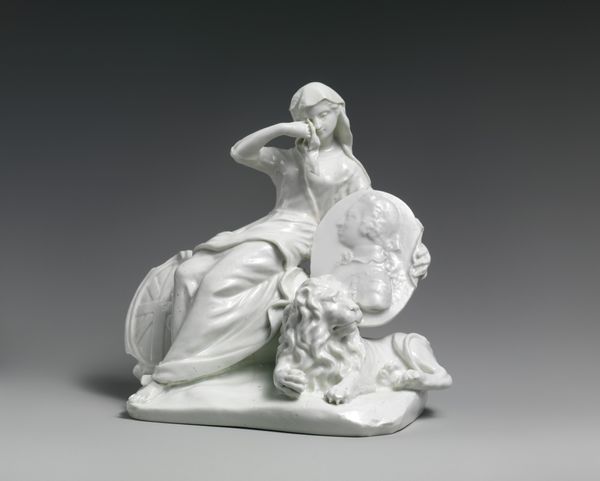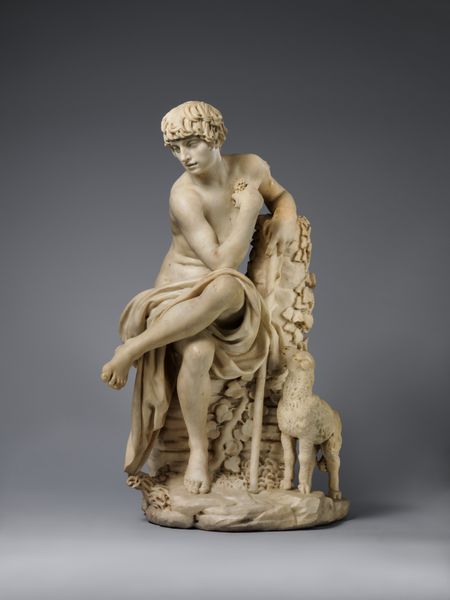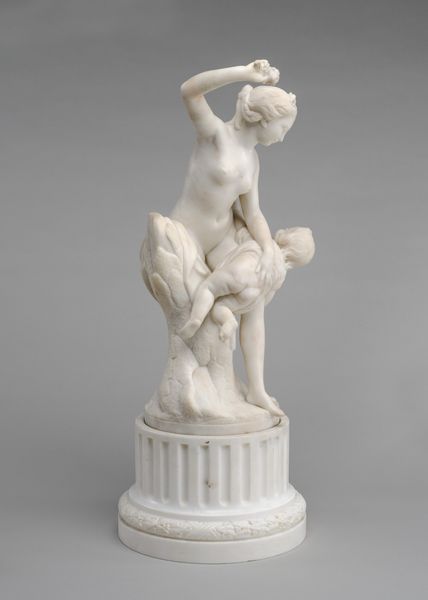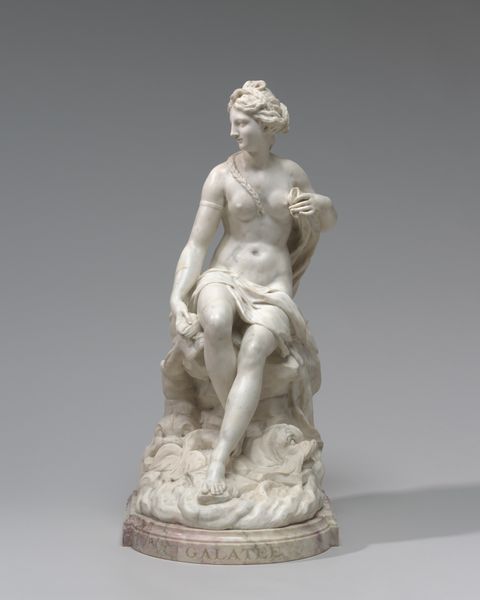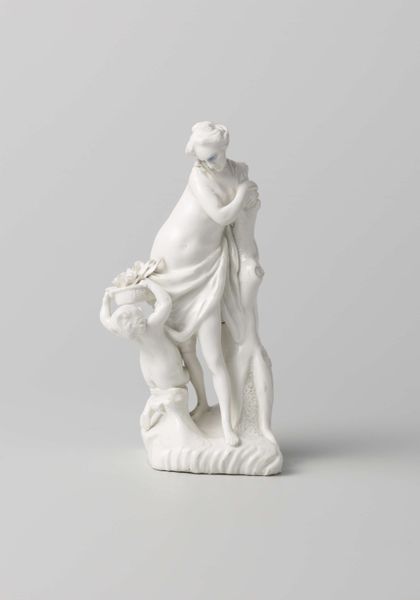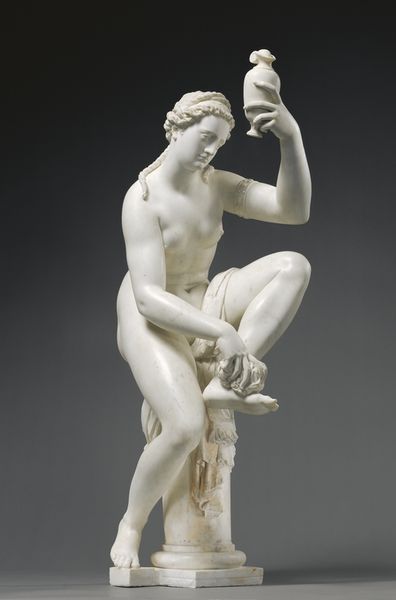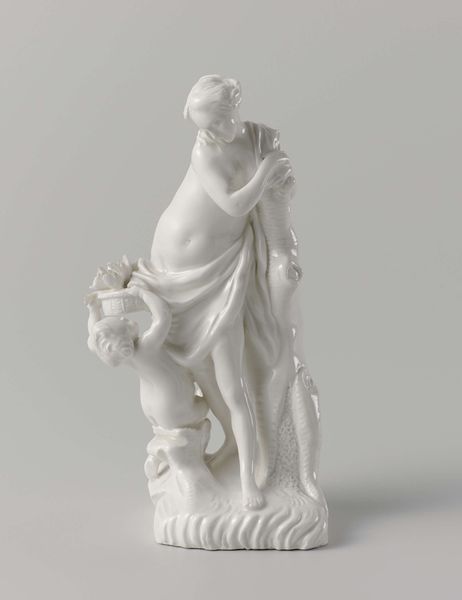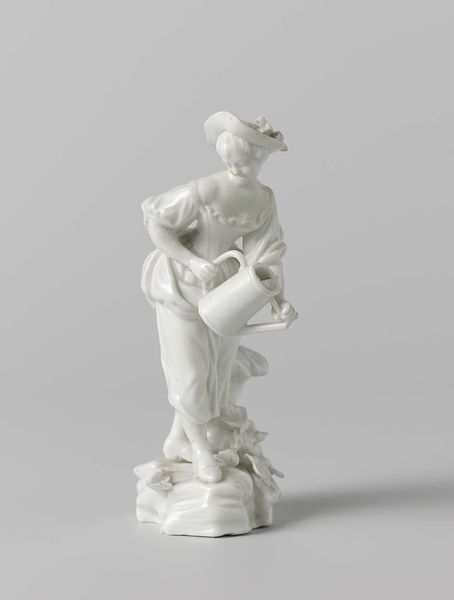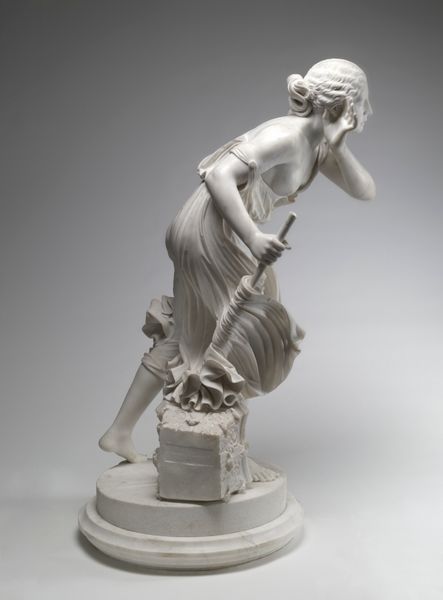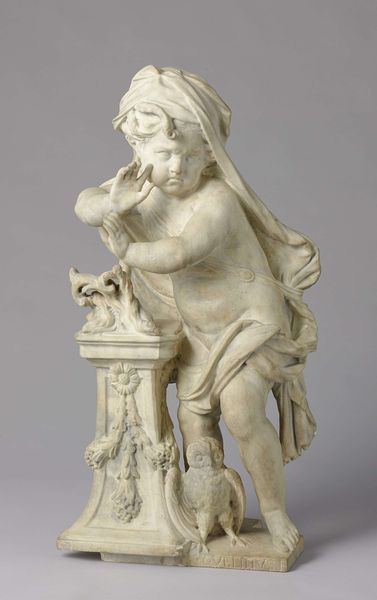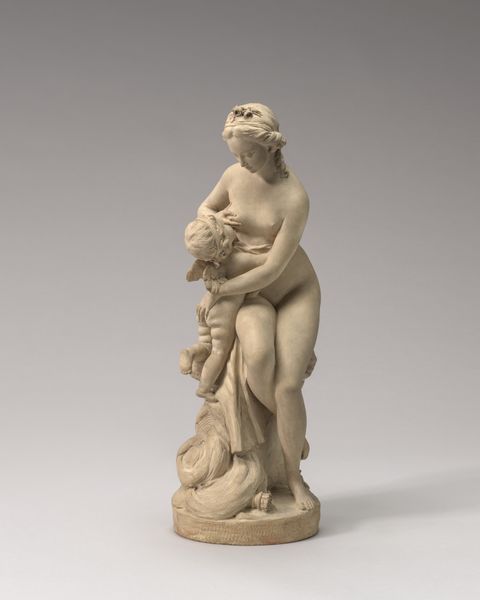
Dimensions: confirmed: 9 5/8 × 4 1/4 × 4 1/2 in. (24.4 × 10.8 × 11.4 cm)
Copyright: Public Domain
Editor: We're looking at "Figure of an Enslaved African Man," made between 1760 and 1790 by Giuseppe Piamontini. It’s porcelain, currently residing in the Met. The stark white of the figure is striking against the implied suffering. How do you read this piece? Curator: Consider the materiality. Porcelain during this period wasn't just decorative; its production represented enormous wealth and technological control. This piece, then, transforms a brutal reality – the enslavement of Africans – into a display of European power and skill. How does turning a person into porcelain shift our understanding of their humanity, or lack thereof, in the eyes of its commissioner? Editor: So, the material itself becomes a statement? The contrast between the delicate porcelain and the harsh subject matter creates tension. Curator: Precisely. The very act of creating this figure in porcelain speaks to the commodification of both the enslaved person and artistic skill. It's not just about artistry; it is also a reflection of Europe's participation in and beneficiation of the Transatlantic slave trade. The value system on display seems inverted – skill, industry, capital - but at whose expense? Editor: It’s disturbing to think of such suffering rendered in this precious medium as merely decor. I hadn’t considered porcelain's relationship to the wider political economy. Curator: That’s exactly where materialist approaches lead us, challenging how seemingly simple aesthetics reveal power structures. The tension rests in the relationship between process, materials and subject matter. This reframing of our traditional notions about this history adds a powerful lens of critique and forces us to address underlying uncomfortable realities.
Comments
No comments
Be the first to comment and join the conversation on the ultimate creative platform.
